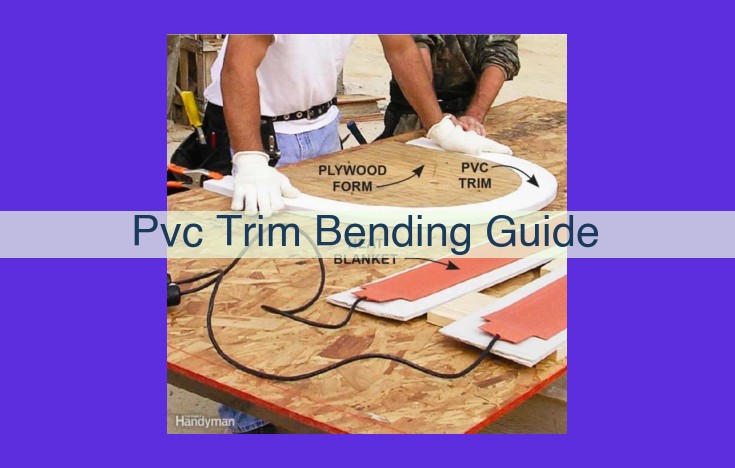PVC Trim Bending Guide
PVC trim bending involves shaping polyvinyl chloride (PVC) trim by applying heat and bending it to create curves and angles. Properly bending PVC trim is crucial to prevent damage or injury. Essential materials and tools include safety glasses, heat gun, and bending jig. Key concepts like bend radius, bend angle, and heat gun technique are discussed. Emphasizing safety, specific precautions like wearing safety glasses and securing PVC in the jig are highlighted. By following this guide, you’ll gain the knowledge and techniques necessary for successful and safe PVC trim bending.
Bending PVC Trim for Flawless Installations
As a DIY enthusiast or professional, you’ll often encounter the need to bend PVC trim for various construction or renovation projects. Whether it’s creating intricate curves for baseboards, moldings, or window frames, understanding the nuances of PVC trim bending is crucial to achieve professional-looking results.
PVC trim bending, when done correctly, can transform ordinary spaces into extraordinary ones. It adds character, definition, and elegance to any room. However, improperly bending PVC trim can result in damage or even injury. That’s why mastering the proper technique is of utmost importance.
Safety First
Before embarking on your PVC trim bending adventure, it’s essential to prioritize safety. Always wear safety glasses to protect your eyes from flying debris and heat. Handle the heat gun with caution and ensure the PVC trim is securely fastened in the bending jig to prevent accidents.
Materials and Tools for PVC Trim Bending: A Comprehensive Guide
Embarking on a PVC trim bending project requires the right equipment to ensure a successful and safe outcome. Here’s a comprehensive list of essential materials and tools you’ll need to achieve flawless bends:
Safety First:
- Safety glasses: Protect your eyes from flying debris and heat during the bending process.
Heating Essentials:
- Heat gun: The heart of PVC trim bending, a heat gun softens the material, making it pliable and ready to shape. Choose a gun with adjustable temperature settings for precise control.
Bending Precision:
- Bending jig: This specialized tool provides a stable surface and precise molding for consistent and accurate bends. Various types of jigs are available, each tailored to specific bend requirements.
Concepts in PVC Trim Bending: A Comprehensive Guide
Bend Radius
The bend radius refers to the curvature of the bend in the PVC trim. It is an important factor to consider as it determines the aesthetics and structural integrity of the bend. A smaller bend radius will result in a tighter curve, while a larger bend radius will create a wider curve. The optimal bend radius will vary depending on the application and the desired outcome.
Bend Angle
The bend angle measures the angle of the bend in the PVC trim. It is measured in degrees, and it determines the sharpness of the bend. A larger bend angle will create a more acute bend, while a smaller bend angle will create a more gradual bend. The desired bend angle should be determined based on the project requirements.
Heat Gun
A heat gun is a specialized tool used to soften PVC for bending. It emits hot air that gently heats the material, making it more pliable and easier to shape. The temperature and airflow of the heat gun should be carefully controlled to prevent overheating or burning the PVC.
Bending Jig
A bending jig is a device that helps to guide and support the PVC trim during the bending process. It ensures that the bend is accurate and consistent, and it prevents the trim from kinking or buckling. There are different types of bending jigs available, each designed for specific types of bends. The choice of bending jig will depend on the complexity and size of the bend.
Safety Precautions in PVC Trim Bending
When working with PVC trim, safety should be your top priority. The materials and process involve working with heat, which poses potential hazards if proper precautions are not taken.
1. Protection First:
-
Safety glasses: Wear eye protection throughout the process to shield your eyes from flying debris and hot PVC particles.
-
Gloves and protective clothing: Protect your hands and skin from heat and chemical fumes.
2. Heat Gun Handling:
-
Handle with care: Use the heat gun responsibly, being mindful of its high temperatures.
-
Ventilation: Ensure proper ventilation to avoid breathing in fumes released by heated PVC.
3. Secure the PVC:
-
Bending jig: Use a proper bending jig to firmly secure the PVC during bending, preventing it from slipping or bending unevenly.
-
Clamps: Clamp the PVC in place to prevent movement and ensure a clean bend.
By adhering to these safety guidelines, you create a safer work environment and minimize the risk of accidents. Remember, safety is always the cornerstone of successful and injury-free PVC trim bending.




